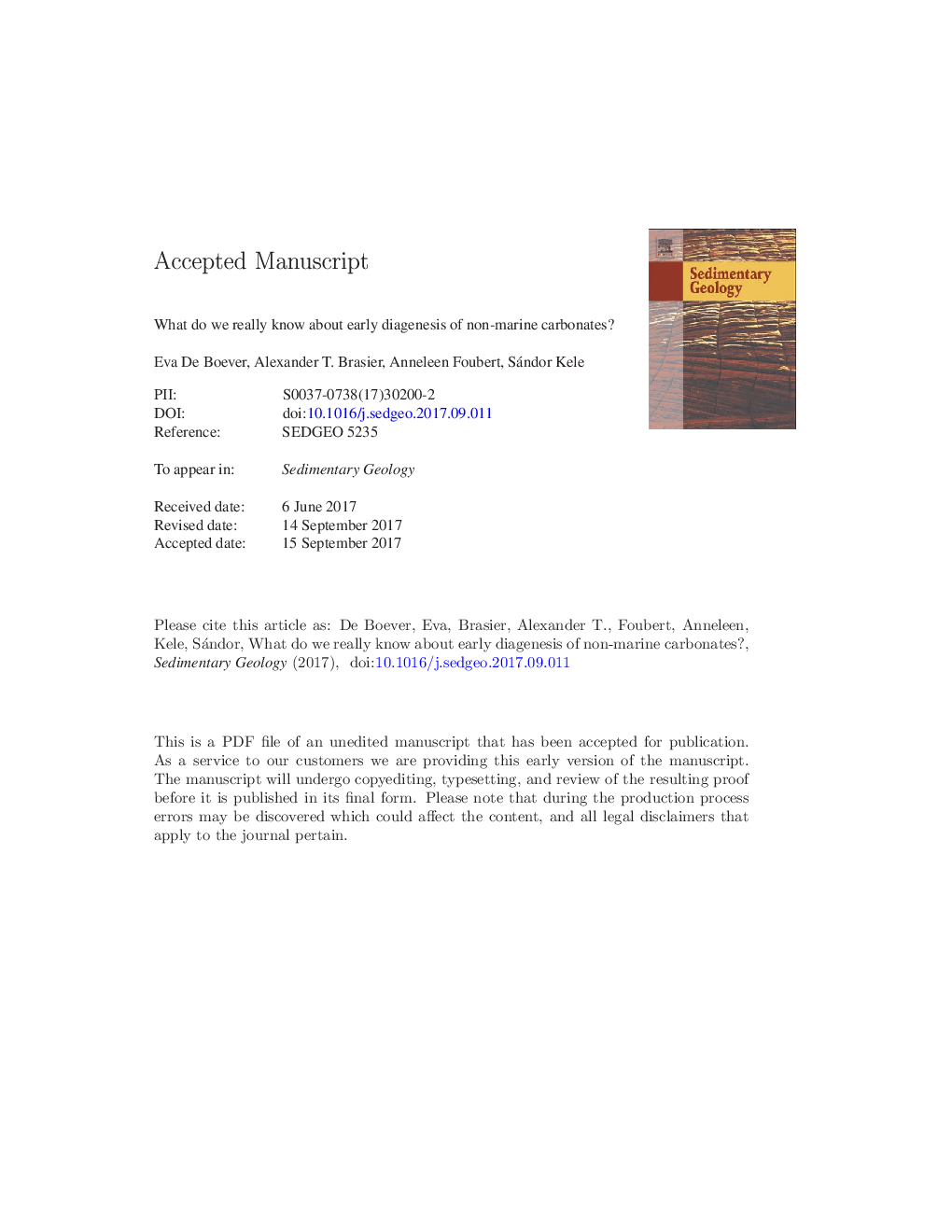| Article ID | Journal | Published Year | Pages | File Type |
|---|---|---|---|---|
| 5781272 | Sedimentary Geology | 2017 | 101 Pages |
Abstract
Non-marine carbonate rocks including cave, spring, stream, calcrete and lacustrine-palustrine sediments, are susceptible to early diagenetic processes. These can profoundly alter the carbonate fabric and affect paleoclimatic proxies. This review integrates recent insights into diagenesis of non-marine carbonates and in particular the variety of early diagenetic processes, and presents a conceptual framework to address them. With ability to study at smaller and smaller scales, down to nanometers, one can now observe diagenesis taking place the moment initial precipitates have formed, and continuing thereafter. Diagenesis may affect whole rocks, but it typically starts in nano- and micro-environments. The potential for diagenetic alteration depends on the reactivity of the initial precipitate, commonly being metastable phases like vaterite, Ca-oxalates, hydrous Mgâcarbonates and aragonite with regard to the ambient fluid. Furthermore, organic compounds commonly play a crucial role in hosting these early transformations. Processes like neomorphism (inversion and recrystallization), cementation and replacement generally result in an overall coarsening of the fabric and homogenization of the wide range of complex, primary microtextures. If early diagenetic modifications are completed in a short time span compared to the (annual to millennial) time scale of interest, then recorded paleoenvironmental signals and trends could still acceptably reflect original, depositional conditions. However, even compact, non-marine carbonate deposits may behave locally and temporarily as open systems to crystal-fluid exchange and overprinting of one or more geochemical proxies is not unexpected. Looking to the future, relatively few studies have examined the behaviour of promising geochemical records, such as clumped isotope thermometry and (non-conventional) stable isotopes, in well-constrained diagenetic settings. Ongoing and future in-vitro and in-situ experimental approaches will help to investigate and detangle sequences of intermediate, diagenetic products, processes and controls, and to quantify rates of early diagenesis, bridging a gap between nanoscale, molecular lab studies and the fossil field rock record of non-marine carbonates.
Related Topics
Physical Sciences and Engineering
Earth and Planetary Sciences
Earth-Surface Processes
Authors
Eva De Boever, Alexander T. Brasier, Anneleen Foubert, Sándor Kele,
